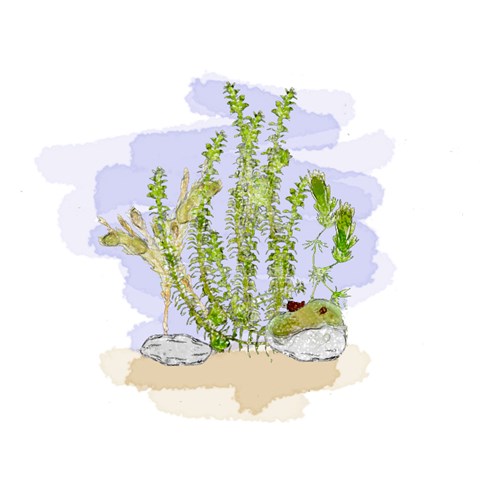In a new thesis, Kristina Tattersdill shows that Canadian waterweed impacts ecosystem functions and species composition of both macrophytes and invertebrates.
Invasive species contribute heavily to global ecosystem changes. One example of an invasive species is the Canadian waterweed (Elodea canadensis), which was introduced to Swedish lakes more than a 100 years ago.
Kristina Tattersdill examined the effect of invasion of Canadian waterweed by studying three lakes with the species, and three lakes without, and found that Canadian waterweed has a competitive advantages over native macrophytes because it starts growing earlier in the spring. She could also conclude that the species composition of macrophytes and invertebrates were different in lakes with the invasive macrophyte, compared to lakes without it. Furthermore, ecosystem functions differed between the two sets of lakes. For example, leaf litter decomposition rates were higher in lakes with Canadian waterweed.
The revealed effects of Canadian waterweed, together with the knowledge that the species is expanding its distribution in Sweden, highlight the need to include Canadian waterweed and similar invasive macrophytes in management of freshwater ecosystems.
